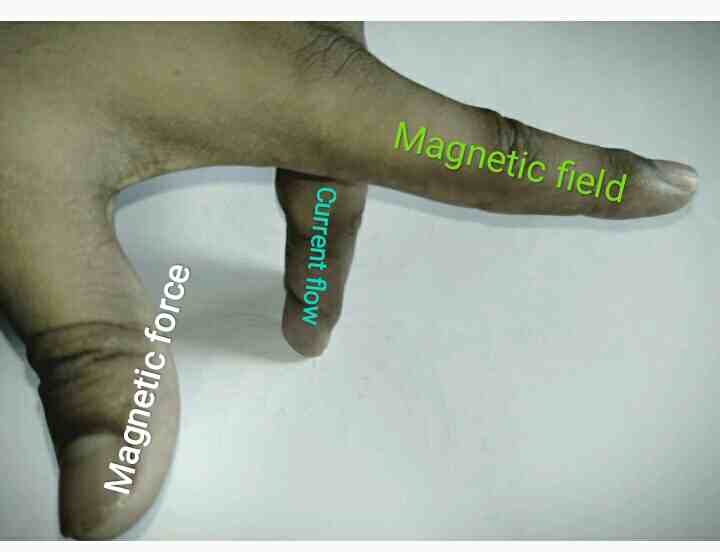A current-carrying wire placed in an external magnetic field experiences a magnetic force. This is similar to the force between two magnets. Because a current-carrying conductor behaves like a magnet. Also, It will show the same interactions as other magnets when it is placed in front of a magnet. Even if we place two current-carrying wires very close to each other, they will exert a magnetic force on each other.
Contents of this article:
- Expression for magnetic force
- On which parameters the magnetic force depends?
- How to find the direction of magnetic force?
- Fleming’s left hand rule
- On what conditions the magnetic force on a current carrying conductor becomes zero?
Expression for magnetic force on a current carrying Wire
Let current through a wire is I and the length of the wire is L. If we place it in an external magnetic field of strength B then the magnetic force on the wire will be as follows –
F = I (L × B) …………. (1)
This is the vector form of the magnetic force on the wire. This formula contains a cross-product between L and B. If the direction of the current flow is perpendicular to the direction of magnetic field then the magnetic force on the wire will be maximum. The maximum force on the wire is Fmax = ILB.
On which parameters does the magnetic force on a current-carrying conductor depend?
The magnetic force on a current-carrying wire depends on the following parameters –
- Current through the wire: The magnetic force on the current-carrying conductor is directly proportional to the current through the wire. If we increase the current through the wire magnetic force increases.
- Length of the wire: Magnetic force on the current carrying wire is also directly proportional to the length of the wire. Longer wire feels a greater magnetic force.
- Strength of Magnetic Field: A current-carrying wire will experience a greater magnetic force in a stronger magnetic field.
- The magnetic force on the current-carrying conductor also depends on the direction of current flow with respect to the direction of magnetic field vector. When the angle between the direction of the current flow and the magnetic field is 90 degrees then the magnetic force on the wire will be the maximum.
How to find the direction of magnetic force on a current-carrying conductor?
To find the direction of magnetic force on a conductor, one can use Fleming’s left-hand rule. Maxwell’s Right-hand corkscrew rule can also be used to determine the direction of magnetic force. The direction of magnetic force is perpendicular to both the magnetic field and the direction of current flow.
Fleming’s Left-hand rule

Fleming’s left-hand rule states that while stretching the thumb, middle finger and first finger of the left hand perpendicularly to each other if the first finger implies the direction of magnetic force and the middle finger implies the direction of current through the conductor then the thumb indicates the direction of the magnetic force on the conductor.
Maxwell’s corkscrew rule
Maxwell’s corkscrew rule states that if we rotate a corkscrew from the direction of current flow to the direction of magnetic field then the direction of motion of the screw indicates the direction of magnetic force on the current carrying element.
On what conditions the magnetic force on a current carrying conductor becomes zero?
The magnetic force on the current-carrying conductor will be zero if any of the following conditions appear.
- If the direction of current flow through the conductor is parallel to the direction of magnetic field.
- If the conductor is a closed wire and it is placed in a uniform magnetic field.
This is all from this article on magnetic force on a current-carrying conductor. If you have any doubt on this topic you can ask me in the comment section below.
Thank you!
Related Posts:
- Origin, definition and unit of Magnetic field
- How to find the direction of magnetic field?
- Properties of magnetic field lines.
Comments are closed.